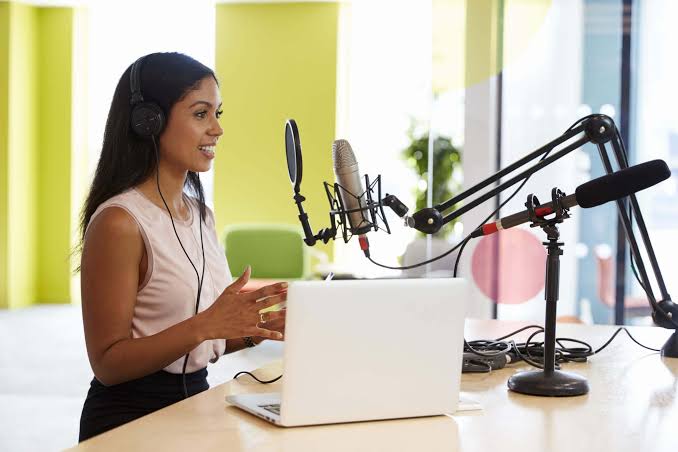Starting a podcast can feel overwhelming if you’ve never done it before. That’s why this beginner’s guide to podcasting will walk you through everything you need to know; from planning and recording your first episode to editing and publishing it for listeners worldwide.
Podcasting has become one of the most effective ways to share ideas, build a personal brand, and connect with a dedicated audience, but understanding the process is key to creating a professional and engaging show.
By following this guide, even complete beginners can confidently launch their own podcast and grow their audience over time.
What is Podcasting?
Podcasting is the process of creating digital audio content, usually in episodic form, that listeners can stream or download.
Podcasts cover nearly every topic imaginable; from storytelling and interviews to news, education, and business insights. Unlike traditional radio, podcasts offer flexibility, allowing listeners to tune in on demand, on any device.
Why Start a Podcast?
Podcasts are more than just a creative outlet, they offer tangible benefits:
- Reach a Targeted Audience: Podcasts attract loyal listeners interested in your topic.
- Build Authority: Sharing knowledge and insights positions you as an expert in your field.
- Monetization Opportunities: Sponsors, advertising, and premium content can generate revenue.
- Brand Growth: Podcasts help expand your brand visibility and credibility.
- Networking: Connecting with guests and listeners can create valuable professional relationships.
Step 1: Plan Your Podcast
Before hitting a record, planning is crucial. Here’s what to consider:
- Choose Your Topic: Focus on something you are passionate about and that resonates with your target audience.
- Define Your Audience: Who are you speaking to? Understanding your listeners will shape your content.
- Format & Structure: Decide if your podcast will be interviews, solo episodes, storytelling, or a mix.
- Episode Length: Beginners often start with 20–40 minutes per episode. Keep it consistent.
- Publishing Schedule: Weekly, biweekly, or monthly, as consistency builds listener trust.
Step 2: Set Up Your Recording Equipment
You don’t need a professional studio to start podcasting. Here’s what you’ll need:
- Microphone: A USB microphone is beginner-friendly, while XLR mics provide higher quality.
- Headphones: Closed-back headphones help monitor your audio without feedback.
- Pop Filter: Reduces harsh sounds and improves recording quality.
- Recording Software: Options include Audacity (free), GarageBand (Mac), or Adobe Audition (paid).
Step 3: Record Your Podcast
Recording is simpler than it sounds. Keep these tips in mind:
- Choose a Quiet Space: Avoid background noise for clean audio.
- Test Levels: Do a short test recording to check volume and clarity.
- Speak Clearly: Maintain a natural pace and tone for listener engagement.
- Record in Segments: Break your episode into sections for easier editing.
Step 4: Edit Your Podcast
Editing improves the flow and quality of your podcast:
- Trim Silences & Mistakes: Remove long pauses, filler words, or mistakes.
- Add Music & Effects: Intro and outro music create a professional feel.
- Normalize Audio Levels: Ensure consistent volume throughout the episode.
- Use Editing Software: Audacity, GarageBand, and Adobe Audition are popular choices.
Step 5: Publish Your Podcast
Once edited, it’s time to publish:
- Choose a Hosting Platform: Buzzsprout, Podbean, Anchor, and Libsyn are beginner-friendly.
- Upload Your Episode: Include your audio file, episode title, description, and cover art.
- Submit to Directories: Share your podcast on Apple Podcasts, Spotify, Google Podcasts, and Stitcher to reach more listeners.
- Promote Your Episodes: Use social media, email newsletters, and collaborations to grow your audience.
Step 6: Promote and Grow Your Podcast
Building an audience takes time and effort:
- Leverage Social Media: Share clips, audiograms, and episode links.
- Engage Listeners: Respond to comments, emails, or questions from your audience.
- Collaborate: Invite guests with their own following to expand reach.
- Optimize for SEO: Include keywords like your “beginner’s guide to podcasting” in episode titles and descriptions to improve discoverability.
Tips for Beginners
- Start Small: Don’t aim for perfection on your first episode.
- Be Consistent: Regular publishing builds trust and loyalty.
- Listen to Other Podcasts: Analyze what works and what doesn’t.
- Focus on Value: Always provide content that educates, entertains, or inspires your audience.
FAQs on Beginner’s Guide to Podcasting: From Recording to Publishing
What is podcasting?
Podcasting is the creation of digital audio content, usually in episodic format, that listeners can stream or download. Podcasts cover a wide range of topics, from storytelling and interviews to education and business insights.
Do I need expensive equipment to start a podcast?
No. Beginners can start with a basic USB microphone, headphones, and free recording software like Audacity or GarageBand. High-end equipment can improve audio quality but is not necessary for your first episodes.
How long should my podcast episodes be?
Podcast episodes typically range from 20 to 60 minutes, but the ideal length depends on your content and audience. Consistency is more important than exact duration.
Where can I host my podcast?
Popular podcast hosting platforms include Buzzsprout, Podbean, Anchor, and Libsyn. These platforms store your episodes, generate an RSS feed, and distribute your podcast to directories like Spotify, Apple Podcasts, and Google Podcasts.
Can I start a podcast if I have no prior experience?
Absolutely. Many successful podcasters started with no experience. By following a structured beginner’s guide to podcasting, learning the basics of planning, recording, editing, and publishing, anyone can launch a podcast.





